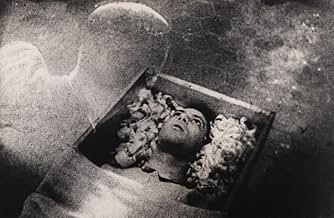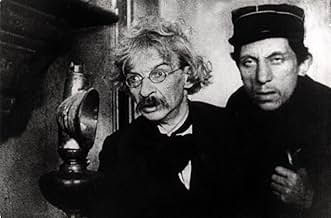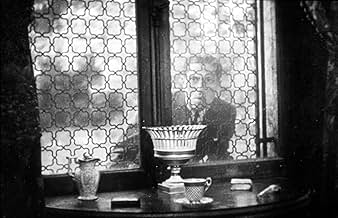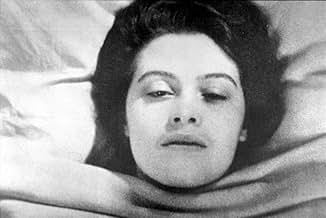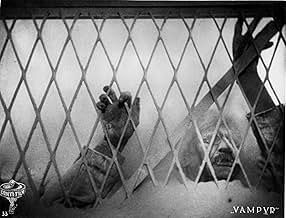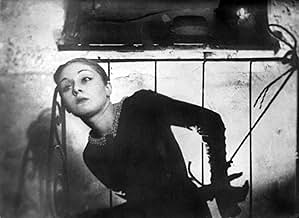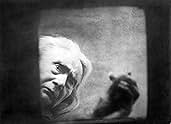AVALIAÇÃO DA IMDb
7,4/10
21 mil
SUA AVALIAÇÃO
Um andarilho obcecado pelo sobrenatural se depara com uma pousada onde uma adolescente gravemente doente está lentamente se tornando uma vampira.Um andarilho obcecado pelo sobrenatural se depara com uma pousada onde uma adolescente gravemente doente está lentamente se tornando uma vampira.Um andarilho obcecado pelo sobrenatural se depara com uma pousada onde uma adolescente gravemente doente está lentamente se tornando uma vampira.
- Prêmios
- 1 vitória no total
Henriette Gérard
- Die alte Frau vom Friedhof (The Old Woman from the Cemetery)
- (as Henriette Gérard)
- Direção
- Roteiristas
- Elenco e equipe completos
- Produção, bilheteria e muito mais no IMDbPro
Enredo
Você sabia?
- CuriosidadesFor much of the cast, this was their only film appearance since they were not professional actors. Henriette Gérard who played the vampire was a French widow, Jan Hieronimko who played the village doctor was a Polish journalist, Rena Mandel who played Gisèle was an artist's model. Even Julian West (real name: Baron Nicolas de Gunzburg) who played Allan Grey, was French-born member of Russian nobility who agreed to finance the film in exchange for the leading part. (He later emigrated to America where he became a powerful fashion journalist and mentor to designers like Calvin Klein.)
- Erros de gravaçãoAt exactly 16 minutes (in the Criterion DVD) as the camera pans right, there is a reflection in a glass window of the camera operator cranking the camera.
- Versões alternativasThere is an Italian edition of this film on DVD, distributed by DNA srl, "LA STRANA AVVENTURA DI DAVID GRAY (Vampyr - Il vampiro, 1932) + NOSFERATU, UNA SINFONIA DELL'ORRORE (1922)" (2 Films on a single DVD), re-edited with the contribution of film historian Riccardo Cusin. This version is also available for streaming on some platforms.
- ConexõesEdited into Dr. Terror's House of Horrors (1943)
Avaliação em destaque
Too often horror films are thought of as light-weight entertainment. Even the best are under-appreciated for what they can tell us about human nature. In the case of Carl Dreyer's "Vampyr," however, all you seem to hear is high-brow rhetoric about how the film's dream-like illogic makes it a meditation upon death. For just once forget all the intellectual mumbo-jumbo and watch this film for what it is, one creepy little flick and the pioneering vampire film of the '30s. It was in production a year before "Dracula" but released the year after, and is a better and scarier film, unless bats on strings scare you.
It's not a silent movie but feels like one - an exceptionally fine one. So if you are put off by non-talking films be warned, dialog is spare, cut to the bone; but the musical score is very good and sinister. The main attractions are the images: shadows that kill people, a spirit that leaves its body, a corpse-eye view of a burial, and other uncanny occurrences that lead young Allan Grey to a girl suffering from a mysterious illness, and to her doctor, a vampire's accomplice who supplies his crone-like patroness with fresh victims.
Possibly the film's poor reception by critics and audiences was because the 1930 soundtrack was too primitive to be appreciated by viewers in 1932, who by then were used to lots of chatter - and because the earlier release of "Dracula" blunted its impact. But with little dialog and without the stagnating influence of a stationary microphone our eyes feast on Hermann Warm's eerie art direction, and are guided by Rudolph Mate's camera, which keeps us off balance, misdirecting our point of view as when it pans to a door through which a nurse exits her patient's room, then pans back again to reveal an empty bed just before the victim's sleep-walking rendezvous with the vampire.
The film bears even less resemblance to its source (Sheridan Le Fanu's "Carmilla") than "Dracula" does to Stoker's novel, possibly because it borrows from another story, Mary Elizabeth Braddon's "Good Lady Ducayne," in which a young man comes to the aid of a young paid female companion of an extremely aged woman whose doctor draws the young woman's blood for his patient to consume. And if "Vampyr's" plot often seems incoherent, so does "Dracula's." The performances, however, are vastly superior. Sybille Schmitz in particular, as the vampire's victim, conveys with her subtle expressions emotions for which spoken language is inadequate.
For those who already know this film, Martin Koerber's restoration on the Criterion release eliminates the large, black-bordered, Gothic subtitles, and corrects the too-bright day-for-night scenes that were so distracting on the Image disc. For others seeing "Vampyr" for the first time, relax, don't think too much, and enjoy!
It's not a silent movie but feels like one - an exceptionally fine one. So if you are put off by non-talking films be warned, dialog is spare, cut to the bone; but the musical score is very good and sinister. The main attractions are the images: shadows that kill people, a spirit that leaves its body, a corpse-eye view of a burial, and other uncanny occurrences that lead young Allan Grey to a girl suffering from a mysterious illness, and to her doctor, a vampire's accomplice who supplies his crone-like patroness with fresh victims.
Possibly the film's poor reception by critics and audiences was because the 1930 soundtrack was too primitive to be appreciated by viewers in 1932, who by then were used to lots of chatter - and because the earlier release of "Dracula" blunted its impact. But with little dialog and without the stagnating influence of a stationary microphone our eyes feast on Hermann Warm's eerie art direction, and are guided by Rudolph Mate's camera, which keeps us off balance, misdirecting our point of view as when it pans to a door through which a nurse exits her patient's room, then pans back again to reveal an empty bed just before the victim's sleep-walking rendezvous with the vampire.
The film bears even less resemblance to its source (Sheridan Le Fanu's "Carmilla") than "Dracula" does to Stoker's novel, possibly because it borrows from another story, Mary Elizabeth Braddon's "Good Lady Ducayne," in which a young man comes to the aid of a young paid female companion of an extremely aged woman whose doctor draws the young woman's blood for his patient to consume. And if "Vampyr's" plot often seems incoherent, so does "Dracula's." The performances, however, are vastly superior. Sybille Schmitz in particular, as the vampire's victim, conveys with her subtle expressions emotions for which spoken language is inadequate.
For those who already know this film, Martin Koerber's restoration on the Criterion release eliminates the large, black-bordered, Gothic subtitles, and corrects the too-bright day-for-night scenes that were so distracting on the Image disc. For others seeing "Vampyr" for the first time, relax, don't think too much, and enjoy!
- mhesselius
- 26 de jul. de 2010
- Link permanente
Principais escolhas
Faça login para avaliar e ver a lista de recomendações personalizadas
- How long is Vampyr?Fornecido pela Alexa
Detalhes
- Tempo de duração1 hora 15 minutos
- Cor
- Proporção
- 1.19 : 1
Contribua para esta página
Sugerir uma alteração ou adicionar conteúdo ausente




